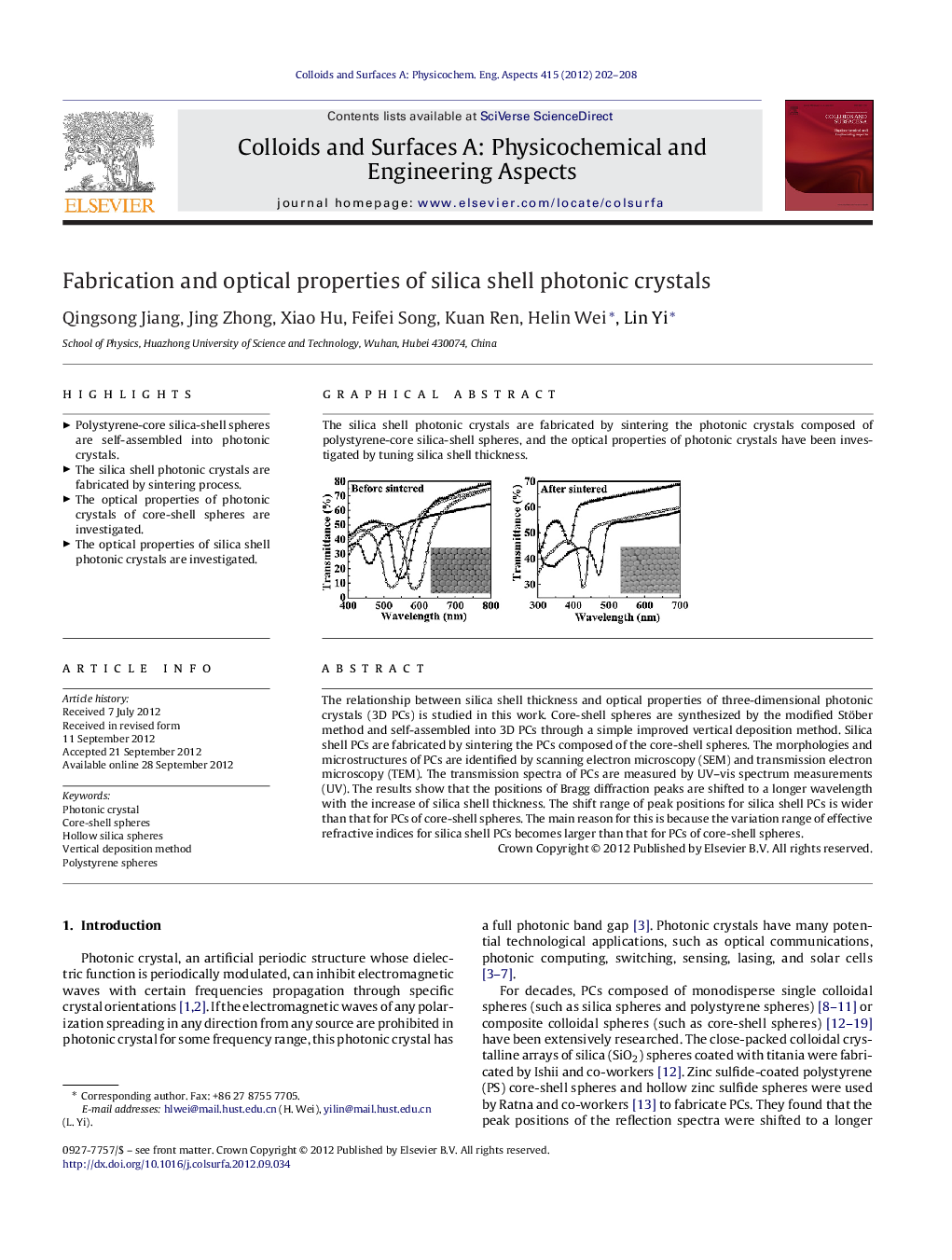| Article ID | Journal | Published Year | Pages | File Type |
|---|---|---|---|---|
| 593893 | Colloids and Surfaces A: Physicochemical and Engineering Aspects | 2012 | 7 Pages |
The relationship between silica shell thickness and optical properties of three-dimensional photonic crystals (3D PCs) is studied in this work. Core-shell spheres are synthesized by the modified Stöber method and self-assembled into 3D PCs through a simple improved vertical deposition method. Silica shell PCs are fabricated by sintering the PCs composed of the core-shell spheres. The morphologies and microstructures of PCs are identified by scanning electron microscopy (SEM) and transmission electron microscopy (TEM). The transmission spectra of PCs are measured by UV–vis spectrum measurements (UV). The results show that the positions of Bragg diffraction peaks are shifted to a longer wavelength with the increase of silica shell thickness. The shift range of peak positions for silica shell PCs is wider than that for PCs of core-shell spheres. The main reason for this is because the variation range of effective refractive indices for silica shell PCs becomes larger than that for PCs of core-shell spheres.
Graphical abstractThe silica shell photonic crystals are fabricated by sintering the photonic crystals composed of polystyrene-core silica-shell spheres, and the optical properties of photonic crystals have been investigated by tuning silica shell thickness.Figure optionsDownload full-size imageDownload as PowerPoint slideHighlights► Polystyrene-core silica-shell spheres are self-assembled into photonic crystals. ► The silica shell photonic crystals are fabricated by sintering process. ► The optical properties of photonic crystals of core-shell spheres are investigated. ► The optical properties of silica shell photonic crystals are investigated.
